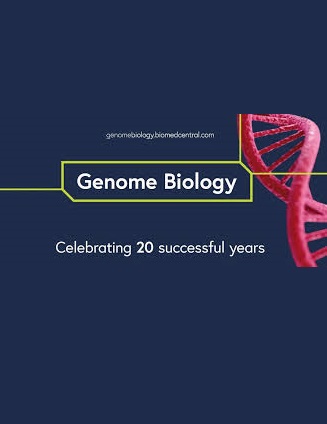A single-nucleus and spatial transcriptomic atlas of the COVID-19 liver reveals topological, functional, and regenerative organ disruption in patients
IF 10.1
1区 生物学
Q1 BIOTECHNOLOGY & APPLIED MICROBIOLOGY
引用次数: 0
Abstract
The molecular underpinnings of organ dysfunction in severe COVID-19 and its potential long-term sequelae are under intense investigation. To shed light on these in the context of liver function, we perform single-nucleus RNA-seq and spatial transcriptomic profiling of livers from 17 COVID-19 decedents. We identify hepatocytes positive for SARS-CoV-2 RNA with an expression phenotype resembling infected lung epithelial cells, and a central role in a pro-fibrotic TGFβ signaling cell–cell communications network. Integrated analysis and comparisons with healthy controls reveal extensive changes in the cellular composition and expression states in COVID-19 liver, providing the underpinning of hepatocellular injury, ductular reaction, pathologic vascular expansion, and fibrogenesis characteristic of COVID-19 cholangiopathy. We also observe Kupffer cell proliferation and erythrocyte progenitors for the first time in a human liver single-cell atlas. Despite the absence of a clinical acute liver injury phenotype, endothelial cell composition is dramatically impacted in COVID-19, concomitantly with extensive alterations and profibrogenic activation of reactive cholangiocytes and mesenchymal cells. Our atlas provides novel insights into liver physiology and pathology in COVID-19 and forms a foundational resource for its investigation and understanding.COVID-19肝脏的单核和空间转录组图谱揭示了患者的拓扑、功能和再生器官破坏
严重COVID-19患者器官功能障碍的分子基础及其潜在的长期后遗症正在深入研究中。为了在肝功能的背景下阐明这些问题,我们对17例COVID-19患者的肝脏进行了单核RNA-seq和空间转录组分析。我们鉴定出SARS-CoV-2 RNA阳性的肝细胞,其表达表型类似于受感染的肺上皮细胞,并且在促纤维化TGFβ信号细胞-细胞通信网络中起中心作用。与健康对照的综合分析和比较揭示了COVID-19肝脏中细胞组成和表达状态的广泛变化,为COVID-19胆管病的肝细胞损伤、导管反应、病理性血管扩张和纤维化特征提供了基础。我们还首次在人肝脏单细胞图谱中观察到Kupffer细胞增殖和红细胞祖细胞。尽管没有临床急性肝损伤表型,但内皮细胞组成在COVID-19中受到显著影响,同时伴有反应性胆管细胞和间充质细胞的广泛改变和纤维化前活化。我们的图谱为COVID-19的肝脏生理和病理提供了新的见解,并为其调查和理解提供了基础资源。
本文章由计算机程序翻译,如有差异,请以英文原文为准。
求助全文
约1分钟内获得全文
求助全文
来源期刊

Genome Biology
Biochemistry, Genetics and Molecular Biology-Genetics
CiteScore
21.00
自引率
3.30%
发文量
241
审稿时长
2 months
期刊介绍:
Genome Biology stands as a premier platform for exceptional research across all domains of biology and biomedicine, explored through a genomic and post-genomic lens.
With an impressive impact factor of 12.3 (2022),* the journal secures its position as the 3rd-ranked research journal in the Genetics and Heredity category and the 2nd-ranked research journal in the Biotechnology and Applied Microbiology category by Thomson Reuters. Notably, Genome Biology holds the distinction of being the highest-ranked open-access journal in this category.
Our dedicated team of highly trained in-house Editors collaborates closely with our esteemed Editorial Board of international experts, ensuring the journal remains on the forefront of scientific advances and community standards. Regular engagement with researchers at conferences and institute visits underscores our commitment to staying abreast of the latest developments in the field.
 求助内容:
求助内容: 应助结果提醒方式:
应助结果提醒方式:


